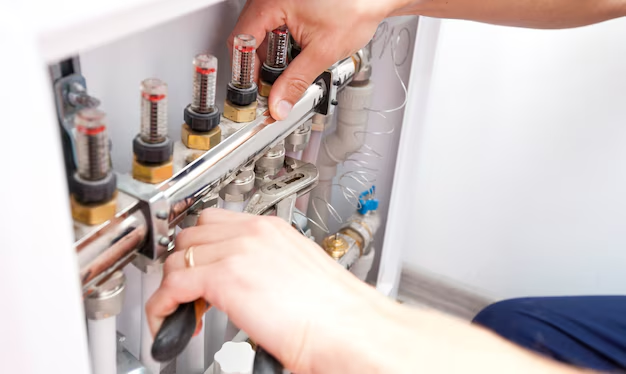Master the Art of Troubleshooting Your Refrigerator Compressor
Picture This: You come home, eager to enjoy a cold drink, only to find your refrigerator running warm. Instantly, a chill runs down your spine. Could it be the dreaded compressor issue? Whether you're a seasoned DIYer or new to home maintenance, knowing how to troubleshoot a refrigerator compressor can save you time and money. Let's dive into the essential steps and tips to ensure your fridge keeps your food fresh and your mind at ease.
Understanding the Heart of Your Refrigerator: The Compressor
Before diving into troubleshooting, it's crucial to grasp what a refrigerator compressor does. Essentially, the compressor acts as the engine of your refrigerator. It's a pump that circulates refrigerant through the system, enabling heat exchange and cooling within the appliance. Recognizing its significance can help you diagnose issues more effectively.
- Function: It compresses the refrigerant, increasing its pressure and temperature.
- Location: Typically found in the back of the refrigerator, at the bottom.
Key Signs of Compressor Problems
- Unusual Noises: A knocking or clicking sound could indicate a failing compressor.
- Fridge Not Cooling: The most obvious sign of a compressor malfunction.
- Overheating: If the back of the refrigerator is excessively hot, the compressor might be struggling.
- Frequent On/Off Cycling: A compressor that turns on and off more than usual could indicate an issue.
Step-by-Step Guide to Troubleshooting Your Refrigerator Compressor
1. Safety First: Power Down
🔌 Safety Tip: Always unplug your refrigerator before starting any repairs to avoid electric shock.
2. Check the Power Source
- Ensure the Power Cord is Securely Plugged In: A loose or damaged cord can mimic compressor issues.
- Inspect the Outlet: Try connecting another device to ensure the outlet is working.
3. Listen Carefully
- Identify Unusual Sounds: The compressor generally emits a gentle hum. Be alert for knocking or excessive buzzing.
4. Evaluate the Temperature Settings
- Correct Temperature: Ensure both freezer and refrigerator settings are at their ideal temperatures. Sometimes the issue might not be the compressor itself but incorrect settings.
5. Inspect the Condenser Coils
🛠️ DIY Tip: Dirty coils can cause the compressor to overwork. Cleaning them can improve performance.
- Location: Usually located at the back or underneath the appliance.
- Cleaning Steps:
- Use a brush or vacuum attachment.
- Clear any dust or debris carefully.
6. Assess the Compressor's Condition
- Visual Inspection: Look for oil spots around the compressor, indicating a potential leak.
- Shake Test: Gently rock the fridge. If the compressor rattles, it might be loose.
7. Test the Compressor Relay
⚙️ Component Focus: The relay helps activate the compressor. It can be responsible for clicking sounds if faulty.
- Remove the Relay: Typically attached on the side of the compressor.
- Perform a Shake Test: A rattling sound indicates replacement is needed.
8. Seek Professional Help
If after these steps the problem persists, it's time to consider professional assistance. Dealing with complex components or replacing parts often requires expert knowledge to prevent further damage.
Common Causes of Compressor Failure
Understanding why compressors fail can help prevent similar issues in the future. Here are some universal factors:
- Power Surges: Sudden high voltages can damage the compressor.
- Refrigerant Issues: Incorrect levels can impede function.
- Blockages in the Refrigeration System: Cause the compressor to overwork.
- Wear and Tear: Natural degradation over time.
Routine Maintenance Tips for a Healthy Compressor
Regularly Clean the Condenser Coils
Keeping coils clean reduces the stress on your compressor, promoting longevity.
Ensure Proper Ventilation
Make sure your refrigerator has adequate space for ventilation. Crowded surroundings can lead to overheating.
Monitor Seal Integrity
The door seals must be airtight. A compromised seal can lead to compressor overworking.
Consider an Energy-efficient Model
Modern refrigerators are typically more efficient, reducing stress on components like the compressor.
Summary of Key Steps to Troubleshoot Your Refrigerator Compressor
Here’s a quick recap to help you keep your refrigerator running smoothly:
Troubleshooting Checklist
- 🔍 Check Power Source: Ensure it's plugged in correctly.
- 🎧 Listen for Noises: Identify abnormal sounds.
- 🌡️ Review Temperature Settings: Make sure they are appropriate.
- 🧹 Clean Condenser Coils: Remove any dust.
- 🔎 Visual Inspection of Compressor: Look for leaks or physical damage.
- ✅ Test the Relay: Inspect and replace if necessary.
- 📞 Call a Professional: When in doubt, seek expert help.
Utilize these steps as a practical guide when you find yourself facing refrigerator compressor troubles. Not only will a discerning approach save you the frustration of losing groceries, but it also empowers you with confidence in handling this common household challenge.
Final Thought: Be Proactive, Stay Cool
Refrigerators are a modern necessity, and the compressor is its beating heart. While troubleshooting might seem daunting, with the right steps, most issues can be handled efficiently. Staying informed and proactive can ensure your appliance remains in top condition for years to come. So the next time you're faced with an unexpected chill from your fridge, you'll be ready to handle it like a pro. Keep this guide handy, and remember, a little knowledge goes a long way in maintaining household peace and preserving your cool—both literally and figuratively!
